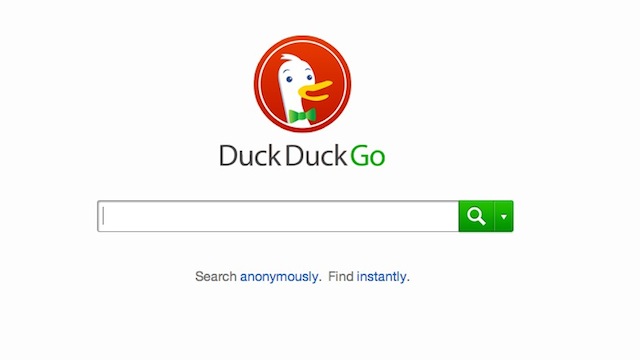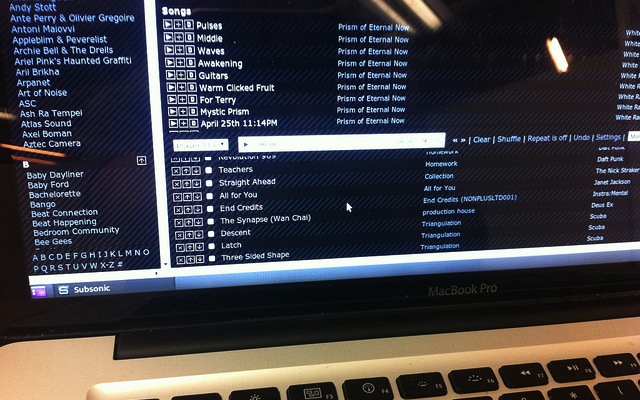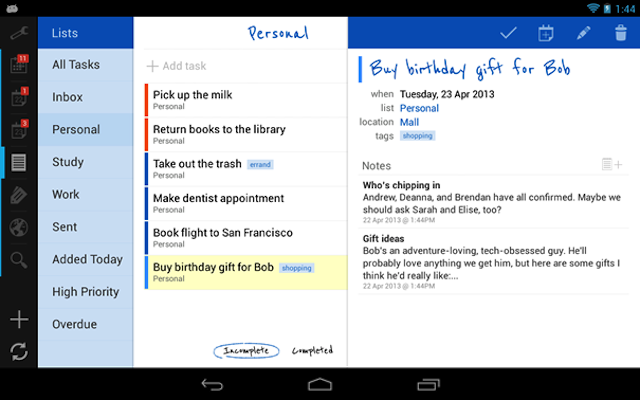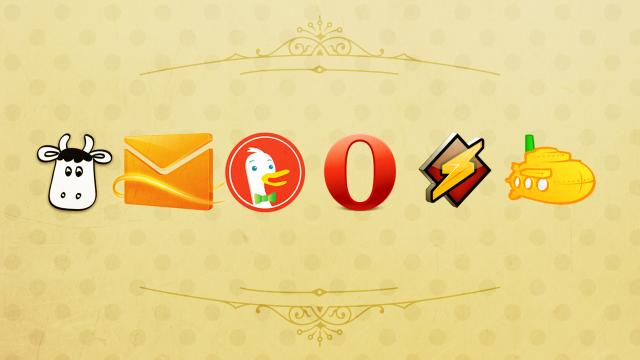Today’s best apps and services for search, email, music streaming and to-do management weren’t always number one. Some of the apps we loved a long time ago are still out there, updating, adding features and keeping their fans happy even if they don’t have what it takes to thrill tech bloggers or stay in the limelight. Here are a few of those old dogs you may remember, and some of the new tricks that make them worth a fresh look.
Photo by sleepy kitty
Duck Duck Go

Duck Duck Go may seem an obvious choice because it’s enjoying a huge resurgence now, but it wasn’t always that way. The search engine was founded back in 2008 as an attempt to aggregate more useful information from first-party sites and trim out some of the fluff that you may have found searching with other popular engines at the time, including Google. It’s a “hybrid” search engine, which means its results are compiled through other engines and crawlers via open APIs.
What that means for you is that unlike the big search engines like Google and Bing, which do their own indexing of the web and use their own algorithms to organise the results, Duck Duck Go takes results from elsewhere and prioritises them for you. The end result is a bit like the “metasearch” engines from the early 2000s, which sowed results from multiple sources. Duck Duck Go regained popularity over the past year because it has re-branded itself as a truly ‘private’ search engine — one that doesn’t track your searches, doesn’t need you to log in, and (unlike Google) doesn’t collect any data on your activities.
Subsonic

In an age where Plex and XBMC are the most popular media centre apps and we can stream music and movies with gadgets like the Chromecast, poor old Subsonic seems to have fallen by the wayside. It has consistently been one of your favourite personal media streamersfor years, but never a winner, and never incredibly popular. That’s a shame, since Subsonic has a passionate community around it and active developers who are busy adding features and improvements. Even if you love Google Music or Spotify or Plex, Subsonic gives you control over how your media is shared, what format it’s in, whether it’s transcoded or not, and who accesses it — all without uploading it or its metadata to anyone else.
Subsonic used to be simply a service for streaming music from one computer to another on the same network, but over the years it has grown into a full-fledged media streamer that supports Windows, Mac and Linux, as well as mobile platforms including Android, iOS, Windows Phone and Blackberry. There are even Subsonic apps for the Roku and Sonos. It runs on your own computer at home, and you have complete control over its security and who can access your media. You can easily stream music, movies, and other media whether you’re at home in another room, on your phone across the globe. Additionally, Subsonic serves as a jukebox app, and can download album art, lyrics, reviews, and more for you automatically. You can also use it as a podcast catcher. Plus, if you’re a fan of unique or niche file formats and lossless audio, Subsonic is perfect for you. Seriously, take a look at its features if you haven’t lately.
Remember The Milk

A number of people have pointed out that Remember The Milk isn’t the productivity darling that it used to be. We’ve covered it ever since Lifehacker started, but the discussion around its most recent recent updates, even if they’re been great, has largely been about how they compare to newer tools. Regardless of the competition, the team behind RTM has been busy working on the service, and it still has a passionate user base.
Over the years, RTM has introduced Evernote integration, made its mobile apps free, brought down its paywall, updated the apps to keep up with design trends, and integrated with Gmail and Google Calendarmore. Even if it’s not as popular as it once was, it’s still one of the most flexible productivity apps on the market, and it works seamlessly with so many other services that most of us already use that it’s hard to believe. The fact that most of those features are behind a $US25/yr paywall may be part of the issue, but free users get access to all of the mobile apps and once-daily sync. It’s by no means a full idea of what’s available if you pay up, but it is a taste.
Opera
Opera has been around for ages, and while there are definitely a lot of people who love it and evangelise it, most browser market share stat counters reveal that its usage share is consistently low, though it’s remarkably popular in Russia and some European countries. The team behind Opera has been busy. The browser recently made the switch to Chromium and WebKit for its next generation browser, called Opera Next. That new version of Opera exited beta in a semi-unfinished form back in July, but it shows a lot of promise, even if some people have called it out as a “crippled Google Chrome.”
Other people have been a bit more optimistic about it, and the new version does come with the bonus that you can install Chrome extensions in Opera with a little sleight of hand. However, with any new browser comes new features and new opportunities, and the new Opera is lightweight and fast. If you’re looking for an alternative to Chrome that doesn’t mean giving up on the core features that makes Chrome great, the new Opera is worth a look.
Hotmail (now Outlook.com)
We were very excited when Microsoft unveiled Outlook, its replacement for Hotmail. If the last time you logged in to that Hotmail account you created back in the late 90s was to change your password or empty out the spam that had accumulated in it, or when Hotmail eventually transitioned to Windows Live Mail, it’s time to take a fresh look. The new interface is fast, the new spam filters and junk mail tools are powerful, and reading your email is an ad-free experience. You can message friends, connect with SkyDrive to send files and attachments from the cloud and share photo galleries, and much more. You can even use Outlook with your own domain.
I signed up for my first Hotmail account back in 1996, long before the Microsoft buyout, and I still have that address (and it still works). I remember the wailing and gnashing of teeth when Microsoft acquired it, and I wouldn’t be lying if I said people had a reason to be worried — it took until 2012 for Microsoft to do the name justice and present a really useful, functional and fast webmail platform, but it’s here now. If you haven’t tried it, give it a whirl.
Winamp
Winamp may not be fair to include here because it’s still (for now anyway) our favourite music player for Windows, and one of your favourites, too. In many ways, it’s exactly the way you remember it, down to the layout of the player windows and the equaliser, and the skins available to make it look the way you like. Still, that doesn’t mean all has been quiet on the Winamp front — the team behind it has been working hard on Winamp for Android, and the Winamp Mac beta for syncing with mobile devices and organising music.
If you haven’t used Winamp for ages, you’ll find a tool now that’s both familiar and more powerful than it was before. It offers lots of music sources and downloads built-in, more complete library management and automated tools to help fill in the blanks in your music library’s metadata, scrobbling to Last.fm and other services, and plenty of streaming music from ShoutCast radio stations built-in. If you have an Android phone, Winamp is one of the best tools to sync and organise your music with your phone if you don’t want to upload it all to someone else or use a cloud service for your music, and it’s only getting better on all of its supported platforms. It still whips the llama’s arse, after all these years.
These are just a few apps and tools that have been toppled from their seat of dominance by other apps and companies, but remain great options in their own right, and continue to update to provide more features and value to their users. Contrary to the perception that the internet only wants one of everything, options are good things to have, and the top tools in a category aren’t always the best for a specific use case or set of needs. If you’ve been looking for alternatives to some of the big names and haven’t looked at some of these for a while, take another look now.

Comments
4 responses to “Six Apps We Used To Love (And Where They Are Now)”
lol winamp.
I used to love Winamp. Haven’t used it for years though. Use Songbird on mobile (Android) and Musicbee in Windows
Winamp is playing something for me right now. You cannot kill Winamp.
winamp for windows has always been the player of choice. cpro makes it look every bit as cool as any other player. winamp for android is crap.